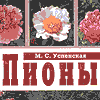origination:
IPHIGENIA (Daughter of Agamemnon) (D-303) Nassos Daphnis, Oct. 17, 1977. First bloomed 1973. Parentage. Generation - BC-3; BC-2 x J-2 (Daioh). Deep red, small maroon flares. Two rows of petals, rounded and well formed. The petals of the inner row come straight up but bend backward, halfway. The outer row completely stretched outward. Strain: ¾ Moutan, ¼ Lutea. Classed single. Good substance and strength of stem good. No pollen or seeds. Fragrant. Foliage small and delicate. Reliable. Bulletin #224.
IPHIGENIA Deep velvety double red flower with dark red flares, opening wide to show the circlet of golden stamens.
IPHIGENIA An outstanding deep velvety red flower, opened wide to show the circlet of golden stamens. Extremely dark red flares dramatise the effect even further. One of the best reds. Red semi-double.
IPHIGENIA (DAUGHTER OF AGAMEMNON)
Flower type: Tree Peony—Semi-double
Plant zone(s): 4-8
Bloom time: Mid
Hybridizer: Nassos Daphnis

Delicate medium olive foliage sets the backdrop for dramatic velvety dark red. Dark maroon flares accent each enormous petal.
Paeonia x lemoinei 'Iphigenie' zwei Kreise Petalen, innere aufgewölbt / leuchtend samtrot /100 bis 200 cm/

M.S. Uspenskaja 2003, p. 183:

Theresa Griesbach:










